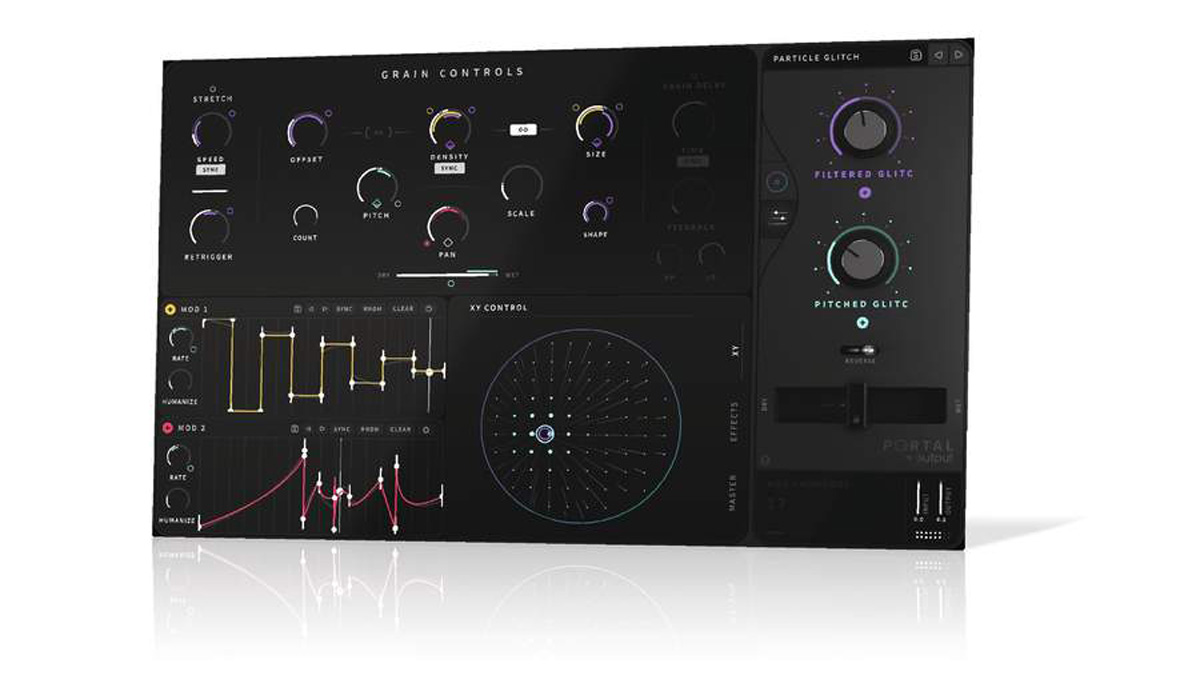MusicRadar Verdict
Sounding every bit as good as it looks and truly endless in its potential, Portal is one of the greatest effects plugins ever made.
Pros
- +
Stunning granular engine.
- +
Wicked effects and Reverse function.
- +
Amazingly flexible envelopes.
- +
Dry/wet mix at every stage.
Cons
- -
Inadequate documentation.
- -
Inelegant envelope preset handling.
MusicRadar's got your back
When it's not building groovy studio furniture, fast-rising American wundercompany Output also develop some very serious plugins.
Its latest offering, Portal (VST/AU/AAX), is a granular-based multieffect with a focus on deep grain manipulation and modulation, both automated and manually controlled.
Grain surgery
Like all Output plugins, Portal is blessed with an absolutely stunning GUI - clean, succinct and beautifully animated. The Main page is essentially a performance control interface, in which that sexy XY pad moves the two assignable Macro controllers next to it (which we’ll come back to) in tandem; the Reverse switch instantly kicks the output into reverse playback; and faders adjust input, output and global dry/wet mix levels, the last lockable for consistency when auditioning presets (of which there are over 250, incidentally).
At the top of the main (Advanced) page, the Grain Controls section offers extensive tweaking of Portal’s granulator engine, which slices the incoming signal into ‘grains’, and messes with their generation and playback. Up to 16 grains are generated at a time, at a sampling rate adjustable from 1/64t to 1 bar. Grains can be pitched up and down, snapped to a range of scales and chords, shortened or lengthened for choppy or ‘smeared’ sounds, slowed down in sync with the host DAW or not, panned, offset, and have an envelope applied for softening. Many of these parameters are randomisable, and the Grain Delay section works like a delay effect, routing the output back to the input for further granularising via the feedback control.
Portal’s Effects section comprises two processors in series, placed in between the granulator and the Master bus for application to both the original dry signal and the granulated one. Each processor has its own input/output level and dry/wet controls, and draws on a roster of seven modules.
Bit Reducer offers sample rate and bit depth reduction. Chorus can be modulated at up to 500Hz. Distortion features Soft, Hard and Foldback styles. Filter gives 12 and 24dB High- and Low-pass options, overdrive and envelope following. Phaser runs up to 32 stages and can be switched to Barberpole mode. Reverb includes a Freeze button for capturing the tail. And Delay includes Stereo and Ping Pong modes, and HP/LP filters.
The effects all sound fantastic in their own right, but, of course, they’re really meant to be modulated by Portal’s envelopes and Macros, whereupon they become exponentially more interesting.
The output of the granulator feeds into the Effects section (see Fully effective), then the Master bus, which features a very serviceable compressor, as well as low- and high-pass filters.
Modulation is key to bringing Portal to life, and to that end, two renamable Macro knobs and two looping multistage envelopes/LFOs are onboard. Assignments are made by dragging and dropping to as many parameters as you like (none are off limits), and, as mentioned, the Macros are also slaved to the XY pad. The envelopes can handle any number of clicked-in breakpoints, and curves of variable depth and skew can be applied to each segment. They run at synced rates from 1/64t to 8 bars, or up to 30Hz unsynced, and randomisation is applied with the Humanize knobs. Envelopes can be saved, and a collection of presets is included, albeit loaded via a rather clumsy standard OS dialogue, rather than an integrated menu.
Opening doors
Portal’s well-tuned granular synthesis engine, superb effects and glorious modulation system come together to form an incredibly powerful plugin that’s far more than the sum of its parts. And the wet/dry controls in every section play a major part, too, enabling detailed mixing at all points between input and output, and bringing creative relevance to the Reverse function.
Want all the hottest music and gear news, reviews, deals, features and more, direct to your inbox? Sign up here.
While most granular effects are designed with the goal of utterly deconstructing and transforming the input signal, Output’s take is more considered and musical in its approach, delivering an almost indescribably broad range of rhythmic, tonal, harmonic, spatial, distorted, pitching and glitching treatments that work brilliantly on any source material, but are particularly well-suited to non-percussive instruments and vocals. Utterly essential.
Computer Music magazine is the world’s best selling publication dedicated solely to making great music with your Mac or PC computer. Each issue it brings its lucky readers the best in cutting-edge tutorials, need-to-know, expert software reviews and even all the tools you actually need to make great music today, courtesy of our legendary CM Plugin Suite.

